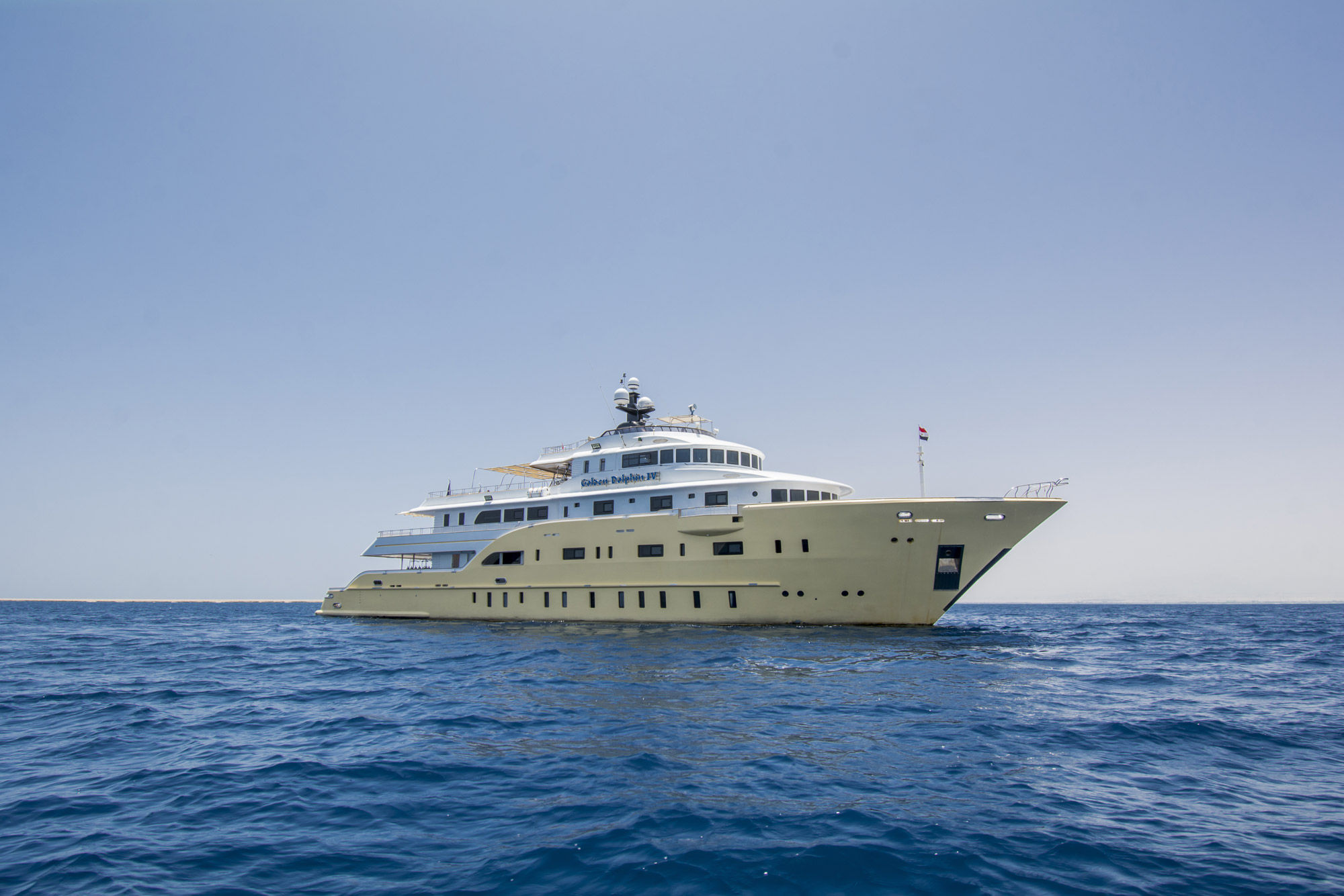日程安排
代达罗斯礁(Daedalus Reef)是一个巨大的礁石群,位于布拉瑟群岛(Brother Islands)以南约180公里处。这个礁石被陡峭的墙壁环绕,南侧有一个高原,从靠近礁石的28米延伸到悬崖边缘的40米。如果天气良好,尽量北行并沿着礁的一侧漂流。这里常见礁鲨和双髻鲨(Hammerhead sharks)。这里的海洋生物比其他地方更为丰富,有多群外科鱼和竹荚鱼。
洛基岛(Rocky Island)是一个神秘的潜水地点,被誉为潜水员的梦想。环绕整个岛屿的凹陷礁石以惊人的深度垂直。全年不断的洋流有利于各种色彩斑斓的海洋生物在礁石上不断争夺生存空间。墙壁上覆盖着最美丽的软珊瑚、海扇、扇形珊瑚、海绵和黑珊瑚树。在蓝色的海水中可以看到礁鲨,尤其是灰鲨和银鳍鲨。此外,还可能遇见蝠鲼(Manta rays)、海龟和海豚。
萨巴格德岛(Zabargad)是一个极好的潜水点。在这里可以沿着墙壁潜水,悬浮在悬崖之上,或者慢慢在浅水区潜水,观察丰富的礁鱼和其他居民,并欣赏美丽的珊瑚花园。
在红海的最南端,我们找到了圣约翰礁(St. John’s reefs)。大哈比里礁和小哈比里礁,两者都具有用大海扇和色彩鲜艳的软珊瑚覆盖的绝佳悬崖,并承诺提供一次梦幻般的潜水体验。在礁石本体可以找到很多海洋生物,在蓝色的海水中,有可能看到梭鱼、不同种类的鲨鱼,有时还能看到海豚或蝠鲼穿过。
埃尔巴礁(Elba Reef)位于苏丹和埃及交界处。
这个礁石几乎未曾被潜水且几乎未受破坏。它分为三个令人着迷的礁石,具有令人印象深刻的特点。埃尔巴礁以其美丽的南北侧高原而闻名。三角形的礁石,高原向北延伸并从大约20米开始倾斜到大约45米的深度。在这个深渊的边缘有一个主要景点,即SS Isola di Levanzo号的大型残骸,它在20世纪初沉没于此。探索整个顶部和船尾区域时可能会遇到威严的灰礁鲨,甚至是双髻鲨。对于那些希望探索海洋美丽和多样性的潜水员来说,这个地区提供了一个迷人的体验。
旅行日程与潜水指南
- 到达当天晚上6点开始登船。
- 次日中午前离开码头。
- 连续5天海上行程 - 每天进行3-4次潜水,具体数量视航线而定。潜水游船的运行始终取决于当前天气、海况、当地法规以及参与潜水员的技能水平。
因此,无法保证一定能够到达某些特定的礁石。 - 最后一天(出发日前一天)最多进行2次潜水,之后返回码头。
- 船上:航行期间提供全食宿服务(除外:抵达日“晚餐”和出发日“早餐”)。
- 出发日当天最晚上午10点离船。
- 根据组织或技术原因,可能在最后一晚为客人提供酒店住宿(基于HB)。
- 返回机场的接送服务(可能会有变动)。
潜水地点:
代达罗斯礁被陡峭的墙壁环绕,南侧有一个高原,从墙壁的30米下降到边缘的40米。高原上覆盖着五彩斑斓的植被,直延伸到浅水区;海龟通常在此聚集,还有大量的群鱼。仔细观察可以发现蜗牛、狮子鱼和石鱼。在高原上停留的铲鲨(Thresher shark)也不鲜见。在西北端有很大可能遇到双髻鲨,但也可以看到各种礁鲨。在西侧漂浮,可以发现海葵城:大约10米宽、5米至30米深的海葵群落在此扎根,在洋流中形成一个巨大的 flokati 地毯。鱼类资源令人印象深刻:比其他地方更为多样化和丰富的竹荚鱼、外科鱼和杰克鱼群。
这个庞大的礁系统位于埃及最南端,距离苏丹边界10英里。这里有数十个优秀的潜水点。其礁石从隐藏在深蓝水中的巨大海底高原中升起。
萨巴格德岛自法老时期以来就因其绿宝石般的橄榄石的古老矿藏而闻名。在萨巴格德,您将沿着南墙潜水,这里有众多非常壮观的通道。
这个地点有几块被沙地区环绕的潜水岩,约20米深处有一个漂亮的游泳通道。这里有美丽的鹿角珊瑚和硬珊瑚。通常可以在沙地上找到豹鲨(Leopard sharks)和白鳍礁鲨(Whitetip reef sharks)。海龟和巨型鲹鱼也很常见。最大深度约39米,但大部分潜水在15米附近进行。水流可能相当强劲,因此这个潜水地点更适合开放水域的高级潜水员。
埃尔巴礁位于哈莱布三角地带的埃及和苏丹边界,南北两侧有非常漂亮的高原。该礁石呈三角形,北方高原较长,从大约20米开始,延伸至大约45米深处。在高原边缘可以找到大量巨型珊瑚扇。一个主要的景点在南高原的深悬崖边缘,是20世纪初沉没的大型残骸SS Isola di Levanzo号。这是一艘很少被造访的美丽沉船,周围到处都是散落在海底的雪利酒瓶。船的螺旋桨位于18米深处,整个顶部或船尾部分可以进入。进一步向内,礁石相对较浅,但珊瑚覆盖良好,种类繁多。鱼类生活有趣,从礁鱼到鲨鱼,什么都可以看到。
海洋生物:铲鲨、双髻鲨、礁鲨、豹鲨、白鳍礁鲨、巨型鲹鱼、海龟、蜗牛、狮子鱼、石鱼、竹荚鱼、外科鱼、杰克鱼、珊瑚扇、硬珊瑚、鹿角珊瑚、巨型海扇。
最后一次潜水将在行程倒数第二天进行。建议潜水员在最后一次潜水后等待24小时再选择飞行。
(*) 本行程由船只运营商提供。样本行程和地图仅供参考,具体航程和访问地点可能根据当地法规、客人体验、天气和后勤情况而变更,具体路线由船长决定。
 微信扫码添加人工客服
微信扫码添加人工客服
